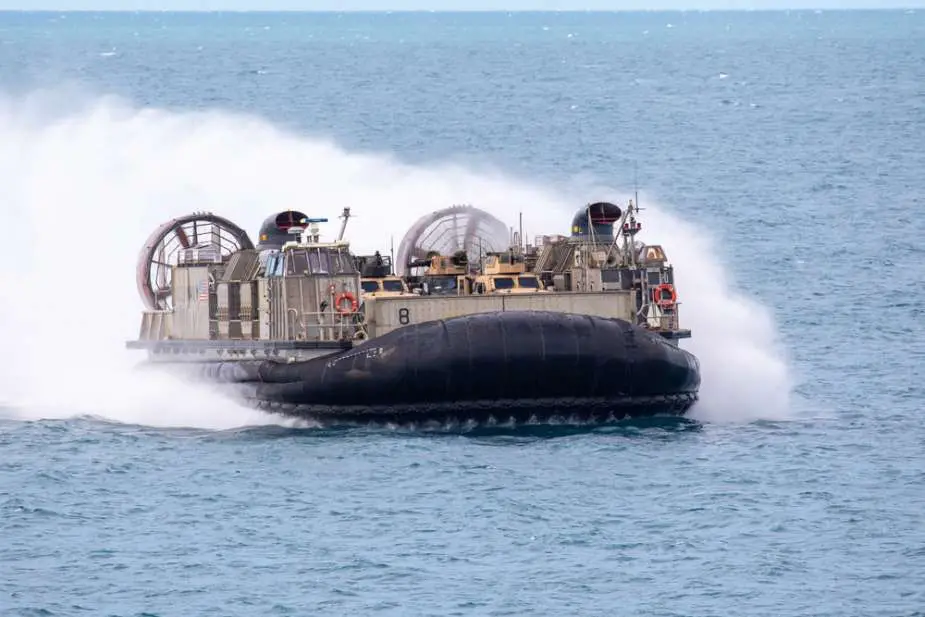Breaking news
US conducts amphibious assault with Japan & Germany during Talisman Sabre 23.
According to information published by the US DoD on August 8, 2023, the 23rd Talisman Sabre exercise, at Stanage Bay, Queensland, Australia, served as the setting for an elaborate joint amphibious assault. This event saw the combined efforts of military personnel from the United States, Germany, and Japan.
Follow Navy Recognition on Google News at this link
 Landing Craft Air Cushion during the exercise Talisman Sabre 23. (Picture source: US DoD)
Landing Craft Air Cushion during the exercise Talisman Sabre 23. (Picture source: US DoD)
Sailors from the U.S. Navy aboard the USS New Orleans undertook the task of transporting members of several key units. These included U.S. Marines from the 31st Marine Expeditionary Unit's Battalion Landing Team 2/1, German sailors from the Coastal Operations Sea Battalion, and Japanese Self-Defense Forces. Advanced landing craft and air cushion operations were leveraged to achieve the successful arrival of these forces onshore.
About the LCAC
The Landing Craft Air Cushion (LCAC) is a distinctive type of air-cushioned landing craft (commonly known as a hovercraft), currently utilized by both the United States Navy and the Japan Maritime Self-Defense Force (JMSDF).
As a versatile platform, it is employed in the rapid transport of various weapons systems, equipment, cargo, and personnel from sea vessels to coastal regions and beyond. Introduced in 1987 and first deployed aboard the USS Germantown, the LCAC has since proven itself invaluable in a range of amphibious operations.
In the US Navy, the LCAC is designed to operate from and be transported by amphibious well deck ships, such as the LHA, LHD, LSD, and LPD classes. Notable ships with the ability to carry these hovercraft include the Wasp, Tarawa, Whidbey Island, Harpers Ferry, and San Antonio classes, with capacities ranging from one to five LCACs.
With a crew of just five, the LCAC is capable of not only beach landing but also a wide array of operations. These include personnel transport, support for evacuation, lane breaching, countermeasure operations against mines, and the delivery of Marine and Special Warfare equipment.
Despite the size and complexity of the LCAC, its four main engines provide both lift and propulsion, and the craft can continue to operate with reduced capability even if two engines become inoperable.
In terms of carrying capacity, the LCAC provides a significant 1,809 square feet (168.1 m2) of cargo space. It is capable of carrying a payload of 60 short tons (up to 75 tons in an overload situation), equivalent to a single M-1 Abrams tank, while achieving speeds of over 40 knots.
However, the high-speed and carrying capabilities come with a considerable fuel demand of approximately 1000 gallons per hour, with a total fuel capacity of 5000 gallons.


























